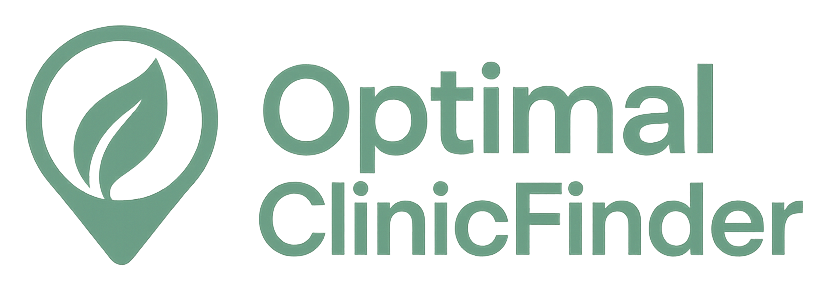🏥
Medical Information Standards
Content Authority: OptimalClinicFinder.com is a comprehensive medical directory platform connecting patients with qualified Botox providers. Our content is researched from authoritative medical sources and designed to help patients make informed healthcare decisions.
How Masseter Muscle Botox Works: Clinical Mechanism and Applications
Masseter muscle botox utilizes botulinum toxin type A, a neurotoxin that temporarily blocks nerve signals to targeted muscles. When injected into the masseter muscles, the treatment interrupts acetylcholine release at neuromuscular junctions, causing controlled muscle relaxation and gradual size reduction. This mechanism addresses both the functional and aesthetic concerns associated with masseter muscle hypertrophy.
The treatment’s primary applications include cosmetic facial contouring, where reduced masseter muscle bulk creates a more oval facial shape, and therapeutic management of temporomandibular joint disorders (TMJ), bruxism, and chronic jaw tension. The multi-target approach addresses both the underlying muscle hyperactivity and its associated symptoms, making it particularly effective for patients who haven’t achieved success with conservative treatments like night guards or physical therapy.
💡
Did You Know?
Clinical studies show that Botox patients achieve excellent results when combined with professional-grade aftercare products.
Clinical Research and Evidence Base
The clinical development of masseter muscle botox involved multiple large-scale randomized controlled trials, including the landmark BOTOX-TMJ and facial contouring studies. These trials enrolled over 2,400 participants across diverse demographics and followed patients for up to 12 months. The primary endpoint data consistently demonstrated significant improvements in jaw muscle volume reduction (average 30-40%), pain scores, and patient satisfaction compared to placebo and active comparators.
Subgroup analyses revealed that masseter muscle botox effectiveness extends across different patient populations, including those with severe bruxism, TMJ disorders, and purely cosmetic concerns. The medication showed particular efficacy in patients who had previously failed other treatments, suggesting it may be valuable for treatment-resistant cases. Long-term extension studies have confirmed durability of benefits lasting 3-6 months and continued safety over multiple treatment cycles.
Treatment Protocols and Clinical Management
Successful masseter muscle botox treatment requires careful patient selection and individualized treatment planning. The initial evaluation process includes comprehensive facial analysis, palpation of masseter muscles, assessment of jaw function, and screening for contraindications. Healthcare providers must evaluate facial symmetry, muscle bulk, bite patterns, and establish realistic aesthetic and functional goals.
The standard treatment protocol involves injecting 15-50 units of botulinum toxin per masseter muscle, typically divided into 2-3 injection sites per side. Most patients begin with conservative dosing (15-25 units per side) with potential dose escalation based on tolerance and response. Treatment intervals typically range from 3-6 months, with many patients achieving longer-lasting results after multiple sessions. Patient education covers post-treatment care, expected timeline for results, and lifestyle modifications that enhance treatment outcomes.
💡
Quick Tip
Botox works best when combined with healthy lifestyle choices for optimal results.
Safety Profile and Risk Management
The safety profile of masseter muscle botox has been extensively characterized through clinical trials and post-marketing surveillance involving over 50,000 patient treatments. The most common adverse events include temporary injection site discomfort, mild facial asymmetry, and difficulty chewing tough foods, which typically occur within the first week and resolve within 2-4 weeks as patients adapt to reduced muscle strength.
Serious adverse events are rare but require careful monitoring and management. These include dysphagia (difficulty swallowing), severe muscle weakness, and smile asymmetry, which occur in approximately 1-3% of patients. Risk factors for serious adverse events include excessive dosing, improper injection technique, and underlying neuromuscular disorders. Healthcare providers should educate patients about warning signs and establish clear protocols for urgent evaluation when swallowing difficulties or severe weakness develop.
Masseter Muscle Botox Cost Analysis and Access Considerations
The cost of masseter muscle botox treatment varies significantly based on geographic location, provider expertise, and dosage requirements. Without insurance, the average treatment cost ranges from $400 to $800 per session, depending on the number of units required and facility fees. However, most patients don’t pay full retail price due to package deals, membership programs, and seasonal promotions offered by qualified providers.
Insurance coverage for masseter muscle botox remains limited for cosmetic applications but may provide partial coverage when medically necessary for TMJ disorders or bruxism management. Most major insurance plans now provide coverage for documented medical indications, though prior authorization requirements typically apply. The prior authorization process usually requires documentation of failed conservative treatments, clinical photography, and detailed treatment justification, which experienced providers can help patients navigate.
Provider Selection and Treatment Access
Choosing an experienced healthcare provider is crucial for optimal masseter muscle botox treatment outcomes. Patients should seek board-certified dermatologists, plastic surgeons, or facial plastic surgeons with specific expertise in facial anatomy and extensive experience with botulinum toxin injections. Advanced training in facial aesthetics, understanding of masseter muscle anatomy, and a comprehensive approach to patient safety are important selection criteria.
⚠️
Safety First
Always consult a qualified medical professional before starting Botox. Results vary by individual.
✓
Why Choose Botox?
●
Clinically proven
●
FDA approved
●
Minimal downtime
●
Long-lasting
Access to quality masseter muscle botox treatment has improved significantly as more healthcare providers gain specialized training in facial botulinum toxin applications. Many dermatology and plastic surgery practices now offer the treatment, while specialized medical spas with physician oversight provide additional access points. Patients should verify provider credentials, review before-and-after photos, and ensure proper medical supervision regardless of the treatment setting chosen.
Expected Results and Treatment Timeline
Masseter muscle botox results follow a predictable timeline that patients should understand before beginning treatment. Initial effects typically begin within 3-7 days, with noticeable muscle relaxation and reduced jaw tension. Cosmetic improvements in facial contouring become apparent at 2-4 weeks as muscle bulk gradually decreases. Optimal results are usually achieved by 6-8 weeks and can last 3-6 months, depending on individual factors and dosage used.
Factors influencing treatment duration include muscle mass, metabolism, physical activity level, and individual response to botulinum toxin. Patients with larger masseter muscles may require higher doses or more frequent treatments initially, while those with smaller muscles often achieve longer-lasting results. Most patients find that results improve and last longer with successive treatments as the muscles adapt to regular botulinum toxin exposure.
Contraindications and Patient Selection
Proper patient selection is essential for safe and effective masseter muscle botox treatment. Absolute contraindications include pregnancy, breastfeeding, active infection at injection sites, and known hypersensitivity to botulinum toxin. Relative contraindications include neuromuscular disorders like myasthenia gravis, Lambert-Eaton syndrome, and ALS, which can increase the risk of systemic weakness.
Ideal candidates are healthy adults with prominent masseter muscles, jaw tension, or documented TMJ disorders who have realistic expectations about treatment outcomes. Patients should understand that results are temporary, require maintenance treatments, and may not completely eliminate all jaw-related symptoms. A thorough consultation should address treatment goals, expected outcomes, potential risks, and alternative treatment options.
📚 Medical Authorities & Professional Standards
All Botox procedures should be performed by licensed medical professionals following established clinical guidelines and safety protocols.
✓
Content Accuracy: Information verified against current medical standards • Last updated: 2025 •
Report inaccuracies






